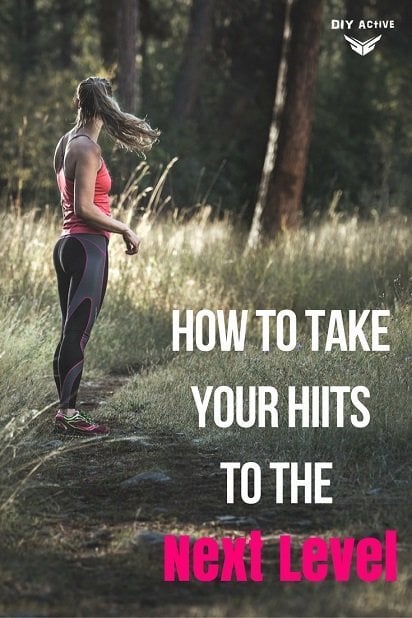High-Intensity Training: Get intense
The article below fits in very well with the DIY Active philosophy of performing the research-backed exercises to make working out more efficient and sustainable!
High-intensity training – are you doing it?
High intensity training is one of the best ways for you to reach your goals because of its efficiency, cardiovascular benefits, and physical and mental challenge.
High intensity simply refers to a workout that pushes your body to the limit. You may also see high-intensity training referred to as high-intensity interval training or HIIT. This is because high-intensity training requires you to exercise in intensity intervals.
For example, you might sprint as hard as possible for 30 seconds, then walk or jog slowly for a minute, and repeat that intervallic cycle for the duration of your workout.
Cardiovascular High-Intensity Training
High-intensity cardio is great for burning calories quickly in a shorter period of time. Several of the most common types of high-intensity cardio are:


running extremely hard for a set amount of time. This can be done on a treadmill, sidewalk, road, or running track.
Rowing
an Olympic sport, but if you do not have a boat or a large body of water, you can find machines at your gym to use for this exercise
Bicycling
You can either use stationary biking or ride an actual bicycle, depending on your tastes and how fashionable your biking clothes are.
One of the major benefits of high-intensity cardiovascular training is that it will help you raise your metabolism and your heart rate stays elevated for the hours after you work out. This means that you burn more calories even at a resting rate.
The Benefits Of High-Intensity Training
So now that you know some of the details about what exactly high-intensity training is, you may be wondering what the big fuss is.
Why are so many people engaging in high intensity training? There are several reasons.
Efficiency
In some cases, you can burn the same amount of calories or build the same amount of muscle with a workout that lasts just ten or fifteen minutes as you would in double or triple that amount of time doing a moderately paced exercise.
Cardiovascular benefits
High-intensity training can improve the health of your heart as well as your endurance. The more you work out your heart and cardiovascular system, the better shape it will be in.
Studies show that high-intensity training will help boost your metabolism all day. High-intensity cardiovascular training will help you elevate the number of calories that you burn for 1.5 to 24 hours after you exercise.
Variety
High-intensity training is great for people that get bored of working out easily because you can do so many different exercises with it.
Beyond the basic forms of cardio like running, bicycling, and swimming, you can apply it to hybrid cardiovascular workouts like jump squats or burpees. On the strength training side, you can apply the high-intensity philosophy to almost any lift, as long as you have proper form and do not use more weight than you can handle.
Precautions With High-Intensity Training
Although high-intensity training is a very effective way to shed pounds and build muscle, there are some precautions. If you are extremely out of shape and it has been a while since you worked out last, you should start with a more moderate form of exercise and work your way up to high-intensity training.
If you have a medical condition, especially one involving the cardiovascular or muscular system, talk to your doctor before you start a high-intensity training routine.
You do not want to run the risk of injuring yourself because of health issues, as it is hard to get in better shape from a hospital bed.
Wrap-Up
If you are looking for other great fitness articles as well as ways to keep in shape, be sure to check out John Balor’s What is Fit blog.
You can learn more about high-intensity training, exercises that you should not be wasting your time with, and even the downsides to excessive cardio.
- Post-Workout Meal: Getting the Most from Your Workout - January 22, 2024
- 6 Ab Exercises To Blast Your Core - December 17, 2023
- 10 Office Exercises You Can Do To Burn Calories - November 19, 2023